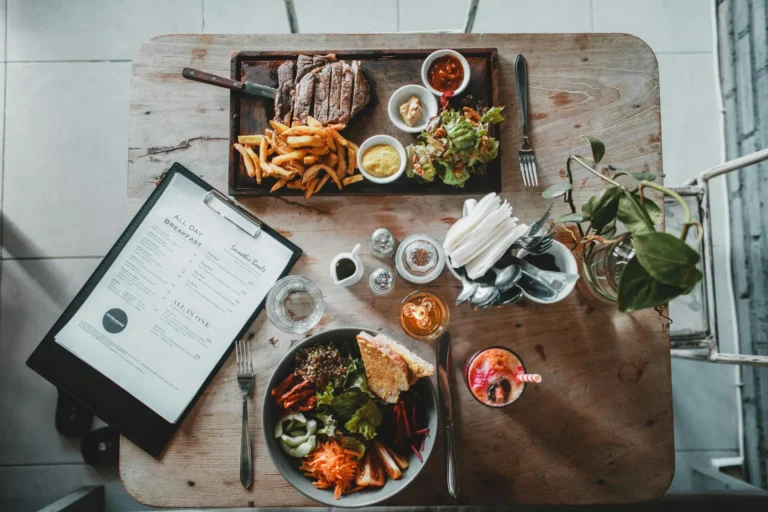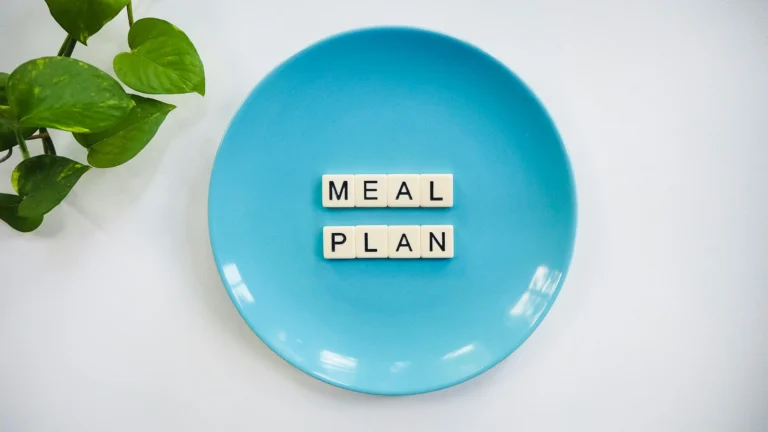Top 10 Meal Planning Mistakes and How to Avoid Them
Meal planning has been proven an effective way to meet health and fitness goals, save time and money, as well as cut down on food waste. Nonetheless, many individuals commit common errors that may sabotage their intentions. In this guide are discussed the greatest meal planning mistakes and ways of avoiding them. We will touch on everything from poor organization and unrealistic expectations to a lack of variety and ignoring leftovers.

Mistake 1: Unclear Goals
1. What Not Having Goals Does
When objectives are not clear, it is easy for meal prep work to become aimless or meaningless. You may find yourself coming up with plans that do not suit your dietary or health needs in any way.
2. Avoiding This
To evade this mistake start by setting specific measurable achievable relevant time-bound (SMART) goals for your meal prepping. Ask yourself why am I planning these meals. What do I want to achieve out of it? It could be losing weight gaining muscles or just eating better understanding what exactly needs to be done shall direct one’s thought process in terms of planning.
Mistake 2: Making The Process Too Hard
1. Why Overcomplicating Is A Problem
It can be discouraging when someone makes a very complex plan full of intricate recipes; this tends to make meal prepping seem like a tedious job resulting in people giving up on their plans altogether.
2. How to Keep Meal Planning Easy
Keep your meal planning easy and doable. Concentrate on recipes that need only a few ingredients or simple methods of cooking. Consider batch cooking and using kitchen appliances such as slow cookers or Instant Pots to save time and energy.
Mistake 3: Not Enough Variation
1. The Risks of Repeating Meals
Eating the same meals over and over again can cause boredom and reduce motivation for sticking with meal planning. It can also lead to nutritional deficiencies if you are not getting a wide range of nutrients.
2. How to Add Variety
To prevent this mistake, include different kinds of foods in your meal plans. Try various cuisines, experiment with new ingredients, and frequently rotate through different recipes. Ensure that you have different proteins, vegetables, and whole grains in every plan so that your diet remains balanced.
Mistake 4: Portion Control is Overlooked.
1. What Happens When You Disregard Serving Sizes
You may end up eating too much if you ignore portion control. Even though they are good for you, foods can contribute to weight gain when consumed excessively.
2. How to Deal with Portion Control
To control serving sizes, use measuring cups, kitchen scales, and portioned containers. Learn about standard portion sizes for different food groups. Create meal plans that match your calorie and macronutrient goals to ensure a balanced intake.
Mistake 5: Neglecting Leftovers
1. Why You Shouldn’t Ignore Leftovers
Leftovers can save the day by providing quick and easy meals when you have a lot going on. If you don’t pay attention to them, you might waste food and have to cook again.
2. What To Do With Leftovers
Make meals with leftovers in the plan. Cook larger amounts of some dishes so that they can be divided into individual portions for future consumption. Get creative with what’s left by turning it into something new – like making frittata out of roasted vegetables or adding cooked chicken onto salads.
Mistake 6: Forgetting About Snacks
1. The Trouble With Skipping Snacks
Many people rely on snacks to get them through the day; forgetting about this fact could result in unhealthy choices or impulsive eating.
2. Including Healthy Snacks In Your Diet
Work healthy snacks into your meal plan. Prepare nutritious snacks in advance such as sliced veggies paired with hummus, nut butter spread on fruit, or yogurt topped with berries. Keeping these options available will help steer clear of less wholesome alternatives.
Blunder 7: Ignoring Different Dietary Requirements
1. The Dangers of Overlooking Special Diets
Not taking into account food allergies, intolerances or any other type of dietary restriction can result in meal plans that are inappropriate for some people and may even be dangerous.
2. How to Address Dietary Needs
Always establish if there are any particular dietary requirements or allergies before coming up with your meal plans. Ensure such needs are catered for in your meal plans; use alternative ingredients which might trigger allergic reactions or intolerances and consider adding gluten-free or dairy-free options when necessary.
Mistake 8: Neglecting to Make Balanced Plates
1. Consequences of Unbalanced Meals
When meals lack balance they can cause nutrient deficiencies, low energy levels, and even weight gain. An imbalanced plate could have too much from one food group while not including enough others.
2. How to Build a Balanced Plate
Design meals that have proteins, carbohydrates, fats, and fiber from different groups. Have at least half the plate being vegetables plus a quarter consisting of proteins then another quarter made up of grains or other carbs; this ensures variety in nutrients consumed as well as keeping fullness for longer periods.
Mistake 9: Not considering meal preparation time
1. The problem with understanding time incorrectly
Planning meals takes preparation, cooking, and cleaning time. Overlooking these things can make it hard to abide by the plans.
2. How to manage meal prep time
When making meal plans, think about your timetable. Set aside particular times for preparing and cooking meals; pick recipes that suit you best. Time can be saved by cooking large quantities at once, and you can also use gadgets such as slow cookers or pressure cookers to quicken the process.
Mistake 10: Failure to monitor progress
1. Results of not tracking progress
It may be difficult to determine whether your goals are being met or not if there is no record of how far one has gone in planning their meals. This absence of response could lead to demotivation.
2. How to track progress
Keep an eye on your journey through food journals, meal-planning apps, or fitness trackers. Note down the types of food consumed, sizes of portions taken, and feelings experienced during different parts of the day. Regularly examining where you have reached so far will enable necessary changes for aligning actions with objectives.
Conclusion
Meal planning is an important resource for achieving health and wellness goals, but steering clear of common mistakes is key. This means you should learn the top ten meal planning mistakes and how to avoid them so that your meals can be effective, well-rounded, and sustainable plans that fit into what you need. Remember to set clear goals, keep your plans simple, introduce variety, and account for snacks and leftovers too. Success in reaching your health objectives through meal planning begins with following these tips.








One Comment